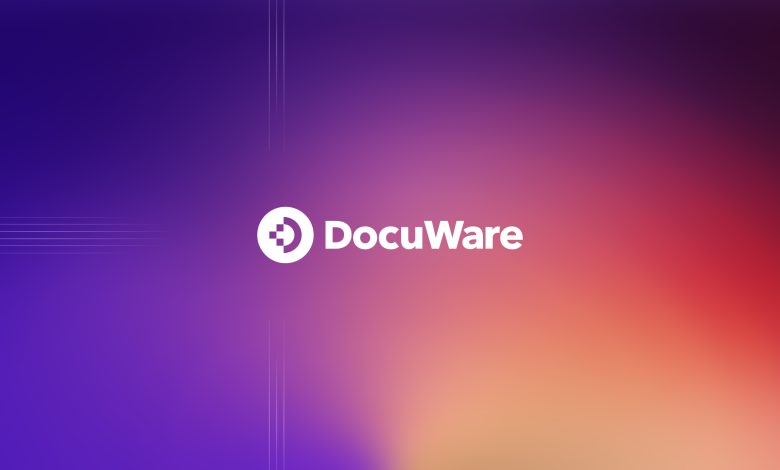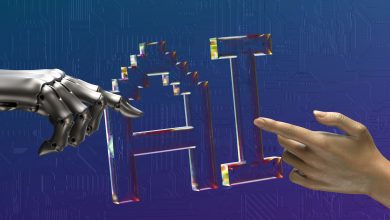
In a world drowning in documents such as invoices, contracts, ID cards, claims, and compliance files, organizations have long struggled to extract usable intelligence from their paper and digital archives. That’s the pain point cloud-based software company DocuWare aims to erase with its new Intelligent Document Processing (DocuWare IDP) platform, an AI-powered system built to read, interpret, and act on information with the precision of a trained analyst.
The platform, announced from the company’s headquarters in Beacon, New York, integrates with DocuWare Cloud or on-premises systems and is also available as a standalone product.
Combining the prowess of machine learning, optical character recognition (OCR), handwriting text recognition (HTR), and natural language processing (NLP) DocuWare IDP aims to give enterprises a smarter way to manage the flood of data that drives their daily decisions. DocuWare says the goal is simple: help businesses spend less time handling documents and more time using the insights inside them.
“The leap is nothing short of transformational. We’ve gone from scanning and storing documents to truly understanding them with the power of next-gen AI,” Marcin Pichur, Regional Vice President of Sales (UK, Spain, Italy, and Poland) at DocuWare, told AI Journal. “IDP can extract meaning from even the most chaotic inputs: handwritten notes, low-quality scans or unstructured forms. It’s our cognitive leap that allows businesses to turn documents into strategic intelligence.”
Inside the Next Wave of Enterprise Document Processing
Document management tools have often focused on digitization, i.e., turning paper into pixels. DocuWare IDP goes a step further. It doesn’t just capture text; it understands context. It can distinguish between “amount due” and “payment received,” identify critical clauses buried deep within contracts, and validate data against corporate databases, all in seconds.
“Technology must earn its keep by solving real problems. At DocuWare, we see IDP tackling the operational headaches that plague nearly every industry,” says Pichur. “Employees spend hours chasing documents, entering data and correcting errors. IDP eliminates that friction and automates the capture, classification and validation of information, quicker than your manual methods (30-50% faster, just compiling data).”
Enterprises in finance, logistics, insurance, and B2C are using DocuWare IDP to automate high-volume, high-stakes document workflows with speed and accuracy.
In finance, it streamlines invoice approvals, compliance checks, and reconciliations by matching extracted data to purchase orders. Likewise, in logistics, it handles customs forms, shipments, and proof-of-delivery with minimal manual input. Insurers use it to classify documents, verify consistency, and assemble claim dossiers automatically. For legal teams, it extracts key contract details—such as parties, renewal dates, and notice periods—to trigger seamless approval or compliance workflows.
“The common denominator across all industries is manual effort,” Pichur explained. “When you stop thinking of documents as static files and start seeing them as dynamic data sources, your entire approach to content management evolves. Workflows become more fluid. Data becomes more accessible and suddenly, document handling evolves into intelligent orchestration.”
Cognitive AI Is Powering the Future of Document Intelligence
Perhaps the most forward-looking aspect of DocuWare’s platform is how it expands the definition of a ‘document.’
“Traditionally, documents meant invoices, contracts, maybe a few forms,” says Pichur. “But today, a document could be a photo ID, a voice transcript or even a social media post. This understanding opens the door to new use cases, such as intelligent mailroom automation, real-time compliance monitoring and adaptive HR onboarding, to name a few. It’s a shift from filing to flowing and from storage to strategy.”
In this sense, DocuWare IDP is reengineering how organizations think about information flow. Built with interoperability at its core, the system integrates with ERP and CRM platforms, as well as AI tools such as OpenAI-powered analytics engines.
“Integration is the multiplier,” Pichur said. “An invoice can be captured, validated against a purchase order in your ERP, flagged for anomalies and routed for approval all without human intervention. Or a contract can be summarized using generative AI, classified by IDP and stored securely in your document management system.”
Empowering People with AI, Not Replacing Them
While automation often sparks concern about job displacement, DocuWare frames IDP as a collaborative intelligence that enhances human expertise.
“Automation truly enhances human capability, and IDP turns knowledge into momentum. By taking over repetitive, low-value tasks like data entry and document sorting, IDP frees employees to focus on strategic work; analysis, decision-making, customer engagement,” Pichur emphasized. “IDP delivers clean, validated, context-rich information that empowers better decisions. Instead of drowning in documents, employees are empowered by data. And because IDP learns and adapts, it becomes a collaborative tool, not a replacement. It’s like having a tireless assistant who never makes mistakes and always gets smarter.”
By improving data accuracy and accessibility, the platform transforms the employee experience, creating what DocuWare calls a “culture of intelligence”, where people and AI operate in harmony. As AI continues to evolve, DocuWare sees IDP not just as a tool but as a foundation for enterprise cognition: systems that understand business logic, anticipate needs, and trigger proactive workflows.
“As AI models become more conversational and context-aware, IDP will evolve into a cognitive engine that understands business logic, anticipates needs and drives proactive workflows,” Pichur asserts. “What excites me most is the convergence of IDP with generative AI and predictive analytics. We’re entering an era where documents are comprehended, distilled and executed without human intervention. In the broader ECM landscape, IDP is becoming the brain, not just the backbone, of digital transformation.”



